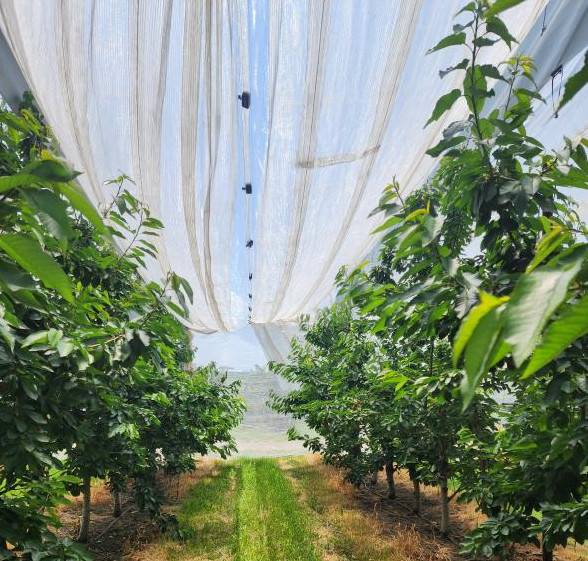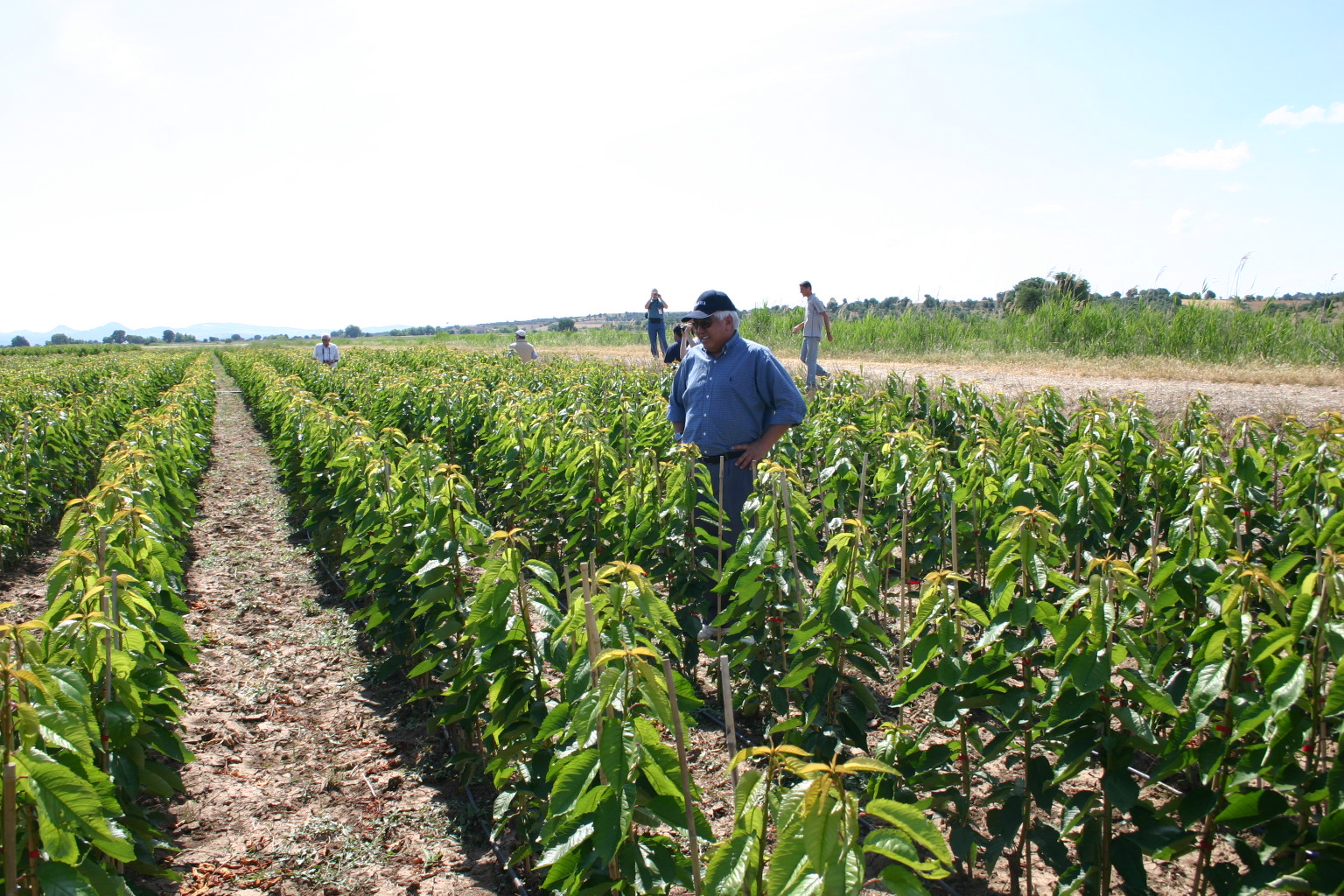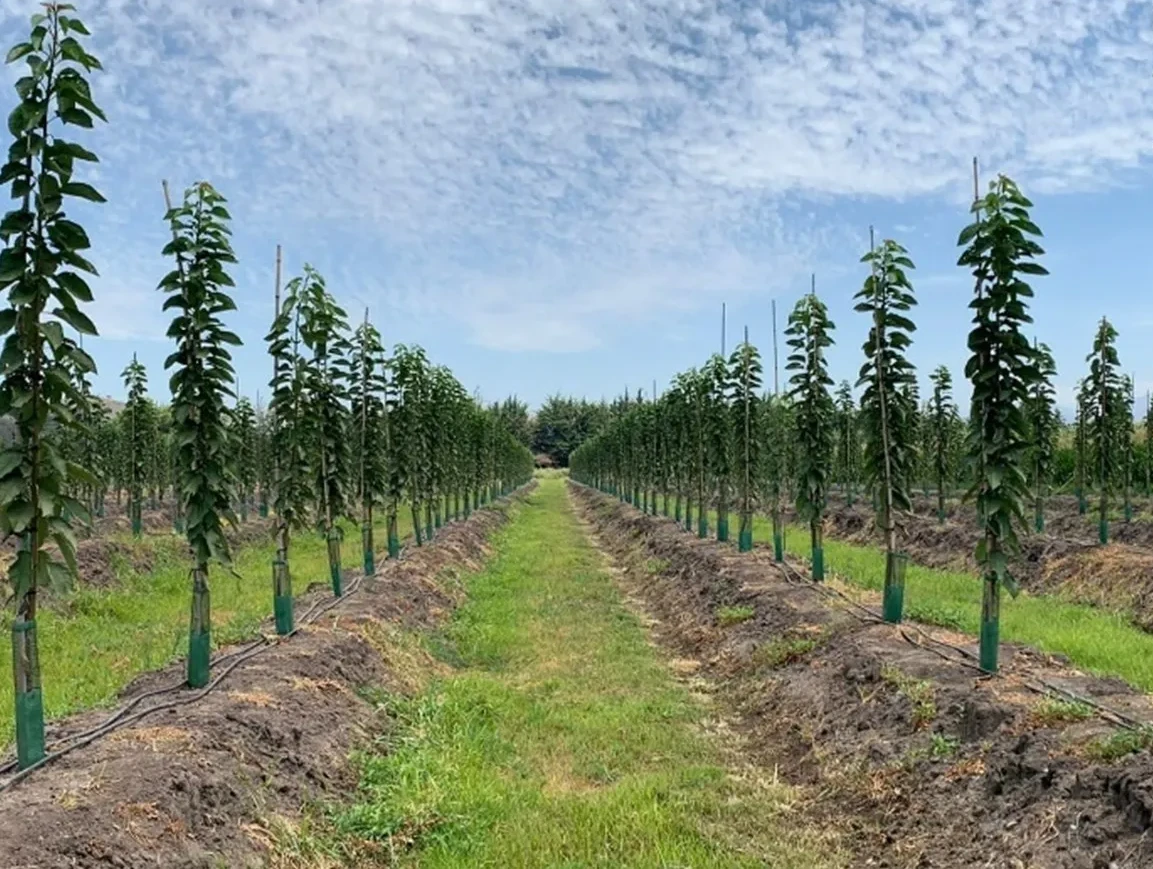References to CEA and controlled environments typically evoke thoughts of greenhouses that protect tomatoes or leafy greens. But at Riveridge Land Company, a vertically integrated company in Grant, Michigan (USA), protected cultivation means indoor sweet cherry trees.
If the idea of 30 acres of sweet cherry trees under protective coverings on an elaborate trellis system seems a bit expensive, it's all relative.
Riveridge's Chief Operating Officer, Justin Finkler, reports that the cost of the covering system, which has a lifespan of eight years, averages around $3,000 per acre per year. The initial installation required about 190 hours of labor per acre to build the support trellis and install the protective covers. Putting up and taking down the covers costs an additional 25-30 hours of labor per acre each season.
But Finkler is satisfied with the annual expense, so much so that Riveridge plans to have another 90 acres of protected cherry trees by 2027. This includes 40 acres planted in 2023 and another 50 in 2024.
 Image 1.
Image 1.
Costs in Perspective
To understand the ROI in action with Riveridge's sweet cherries, it's useful to know that the land is located near Lake Michigan, on the northern border of the United States, and is subject to the whims of weather that impacts the lake, aided by the extremes of climate change.
Finkler explained that when it rains, especially as harvest time approaches, unprotected cherries can suffer significant damage due to cracking. “Being so close to Lake Michigan in the summer, we don’t have much time to react to a rain event,” he said. “If an inch of rain occurs 10 days before harvest, it can be a complete disaster. It’s happened to us several times.”
The only choice for the grower is to harvest early or let the crop go to waste. Before the introduction of protective covers, Finkler and his team chose to harvest the immature crop. "If you have only one chance to harvest before the rain comes, we usually prefer caution," he said. “It really forced us not to harvest the highest quality fruit.”
It was the risk of cracking that prompted Riveridge to begin exploring protective crop options in 2017.
“To be able to grow any kind of program or have confidence in any kind of volume throughout the season, you need to have a cover,” Finkler said. “Our climate is irregular enough to require some of these measures as a countermeasure. It seems there is something every year.”
Transitioning Trees to Protection
The hard-earned lessons of Riveridge have led the company to begin preparing orchard blocks for transition to protective covers. The initial installation of the system, from German manufacturer Voen Covering Systems, took place in early spring 2022. The mature trees, already 12 to 15 feet tall on the existing surface, complicated the process and the learning curve.
Without the necessary equipment, the company tried to rent it. Some equipment worked, others did not. So, as enterprising growers often do, they began customizing the equipment to get the job done better and more easily.
The customizations included mini-skid platforms and accessories to simplify the handling of rolls and cables required for the covers. For the new surface, the grower switched to high-density V-trellis UFO (upright fruiting offshoot) plantings.
When spring frosts threatened the cherries in 2023, protective covers were put on in mid-April and remained for the entire season. Riveridge also added vertical nets for birds around the perimeters of the entire covered area.
“It makes a significant difference in terms of bird damage,” added Finkler. “Last year, while we were picking and packing cherries, there were virtually no bird pecks in the packages.” Hail, which usually coincides with the rainy season, has not yet hit. But the covers have withstood gusts of wind up to 70 miles per hour without problems.
 Image 2.
Image 2.
Counting the Extra Benefits
While the protective covers and bird nets serve their purpose, Riveridge is enjoying additional benefits from its investment. During last year’s frosts, Finkler reported that temperatures under the covers were 3 to 5 degrees Fahrenheit higher. Heaters, able to work under the covers, further increased temperatures. (The team used wood pellets to provide soot-free heat that didn’t damage the covers).
The indirect benefits of bird nets include protection from pests and diseases. Riveridge doesn’t target the spotted wing drosophila (SWD), but some nets are fine enough to inhibit the pest. Rain protection reduces the pressure of diseases such as bacterial canker and leaf spot. Finkler said the netting helps block wind, which can help increase temperatures when needed.
Finally, but not least, the covering system helps promote pollination, as bees warm up to the temperatures under the cover. “If we can gain a few degrees and make the bees work better, we can spread our pollen,” Finkler said.
Finkler believes that Riveridge is the only cherry producer in Michigan to cover their crop, but things could soon change. The news of the protected sweet cherry crop is spreading, and growers are interested.
For anyone interested, Finkler has praise for the system. From a financial perspective, he said, after investing money and labor to plant and maintain cherries, it doesn’t make sense to risk a crop. Also, bringing a consistent supply to the market is critical to building a solid customer base, as Riveridge continues to expand.
Finkler said that the learning isn’t over yet: “We are pleased with what we’ve seen so far. We are eager to learn more as these orchards grow and understand what we can actually do under these covers.”
Source: CEAg World
Image: CEAg World
Cherry Times - All Rights Reserved












